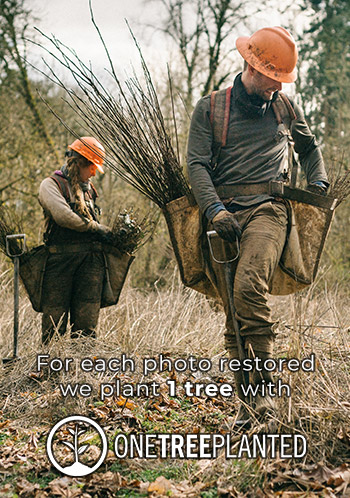11 Things About Victorian-Era Photography
The Victorian Era was a period in the United Kingdom that marked the rule of Queen Victoria. It was an era with many inventions, a lot of which are still in use today. Photography was one of such inventions, and undoubtedly one of the greatest.
During this era, it was quite common to take photos of a loved one who had passed away as a way to remember the dead and lessen the blow of a significant loss. Images taken for this purpose may seem a bit weird by today's standards but were surprisingly touching because families posed with the dead.
As weird as Victorian-era Photography may seem, here are some fun facts:
Most Photos Taken Were of the Dead
Due to the sheer number of diseases and death back in that time, most photos taken were of the deceased. Families took these macabre prints as the last opportunity to have a permanent image of their beloved. The entire household, including the domesticated animals like dogs and cats, would gather around the dead, and they would be posed as if asleep. Creepy, eh?
They Never Smiled in Photos
As most photos were taken amidst times of grief, it was difficult for folks to smile. Additionally, the time it took for the camera to actually take the photo was quite long. Therefore, it was necessary for the people being photographed to remain very still to avoid blurry photos. They would often pose for about 15 minutes, during which it would be practically impossible to hold a smile. Furthermore, smiles were not that common, as the Queen had made mourning fashionable before she had passed on.

The Photos Taken Were All Pretty Strange
As we mentioned before, many pictures were of the dead or involved someone who had recently died, so the energy is a little off. You'd be hard-pressed to find a modern family photo involving a corpse!
Photos Took A Long Time To Capture
The daguerreotype was the primary method of photography used in this era, as it took the shortest time compared to all other methods (not that there were many options.) It took at least 15 minutes to take a single snapshot! In comparison, the first photograph took eight hours, so 15 minutes was nothing.
William Henry Fox Talbot Started It All
William Henry Fox Talbot was one of the pioneers of photography in Britain during the Victorian Era. He became interested in taking pictures after a trip to Lake Como, Italy, in 1833. In 1839 his work was presented to the British Royal Academy, leading to greater interest in the practice and further scientific developments.
Victorian Photography Techniques Are Still in Use Today
Talbot began his photography inventions during a landscaping session. After realizing that drawing on a piece of paper wouldn't help him much, he sought out other ways to capture images using light. Talbot created a rudimentary camera that used a negative image to make a positive, and the work he did laid the foundation for modern photography. The three primary elements of photography that he discovered, such as developing, fixing, and printing, are still used to this day.

The Cost of Photography Was Very High
As a way of permanently preserving photos, painted portraits were used, though they were costly. However, as time went on, the number of people taking photos increased, and the cost of taking photos, in turn, went down. The daguerreotype was the cheapest method of photography. Less costly methods were discovered and slowly introduced in the 1850s, like the use of thin metals, glass, or paper as opposed to silver, which was the main component in more expensive early photos.
Victorian Photographers Used the Daguerreotype
This technique used a single reversed image, which was directly translated as a positive to a silvered copper plate. The image was made through a combination of silver and mercury resting on the plate. The daguerreotype technique was extremely fragile and had to be covered with glass for stability. The process only could capture one picture at a time and was very time-consuming.
The Victorian Middle-Class Advanced Photography
The middle class was mostly responsible for the rapid development of photography. Many of them were entrepreneurs, scientists, and businessmen, and at the time, they could afford the expensive art of preserving memories. It thus makes sense that photography developed into a thriving business rather than just an art form.

Photography Developed into A Business
The entrepreneurs who discovered that photography would fetch a great fortune ventured into it quite successfully. Early on, returns were very high, as few people were involved in the business and everyone needed a picture taken. By 1861, Britain had had over 2,000 full-time photographers.
How the Victorian Camera Worked
The bellows camera was the most commonly used type of camera during the Victorian era. This camera influenced the properties of light to create an image on a piece of film, called a negative. This piece of film was then processed with chemicals, creating a printed image.
No worries! We can fix it and make it beautiful.
from our blog
You might also like
There's a first time for everything. And that includes digitising photos!. Find about the clever minds that made this possible.
Find out what modern editing techniques are available and seven historical images that were modified even before computer technology became available. Let's see how many you did not know were edited!
The art and science of photography hit a lot of milestones in a short amount of time. What we call Stereoscopic Photography was just another step in photography's evolving technology in the transition from paintings to photos.
Many developments took place before modern photography came into existence.
Here are some fun facts about how the pioneers of this visual art produced their pictures back in the day and the most important inventions.





